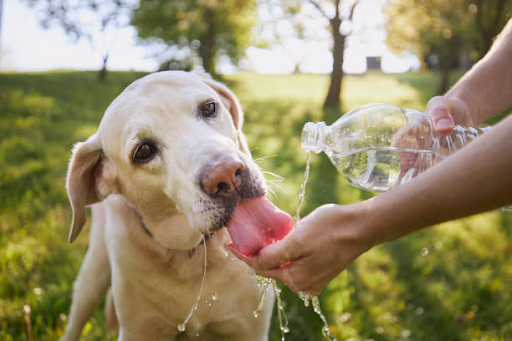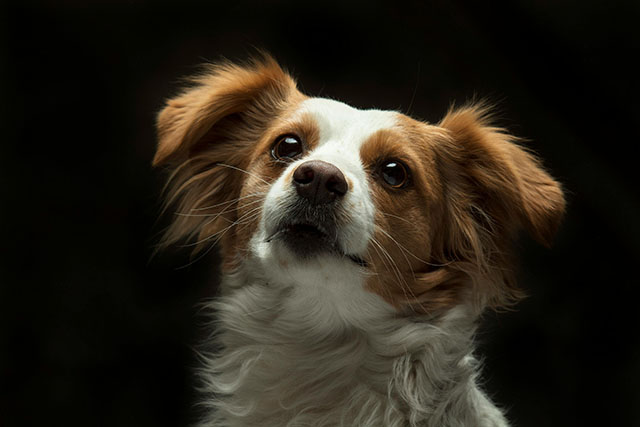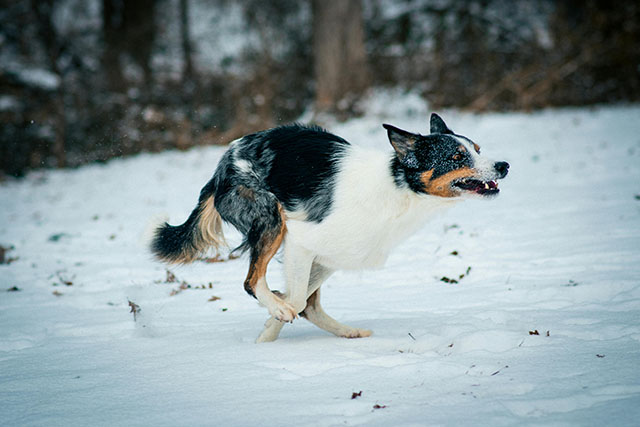It’s no secret that having a pet is a full-time job. Not only do you need to ensure they are fed and exercised, but another crucial aspect of pet ownership is ensuring your dog drinks enough water. It requires monitoring their intake and understanding how much water they need each day or if any changes in their behavior may suggest dehydration.
In this blog post, we’ll explain the importance of adequate hydration for your canine companion and provide some helpful tips on ensuring your furry friend gets the necessary H2O every day!
Why is it Important for Dogs to Drink Water?
Before we wrap up our all-inclusive guide, let’s delve further into the importance of dogs staying hydrated by drinking water:
Maintaining Vital Functions
Water is essential for the proper functioning of a dog’s body. It involves nearly every metabolic process, including digestion, circulation, and temperature regulation. Without enough water, these functions can be compromised.
Preventing Dehydration
Dehydration occurs when a dog loses more fluids than they take in. This can happen through activities like panting, urination, and normal bodily functions. Dehydration can lead to serious health issues, including organ damage and heatstroke.
Kidney Health
Adequate water intake is necessary to support kidney function. The kidneys filter waste products from the blood, and water helps flush these toxins out of the body. Insufficient water can lead to kidney stones or urinary tract infections.
Regulating Body Temperature
Dogs can’t sweat like humans and rely on panting to cool down. This process releases moisture, which must be replaced by drinking water. Dogs need even more water in hot weather or during physical activity to prevent overheating.
Digestive Health
Water aids in the digestion process, helping to break down food and absorb nutrients. Without enough water, dogs can experience constipation and other digestive issues.
Preventing Joint Problems
Proper hydration can also contribute to joint health. Inadequate water intake may lead to joint stiffness or exacerbate existing joint conditions.
Energy Levels
Staying well-hydrated helps dogs maintain their energy levels and stay active and playful. Dehydrated dogs tend to become lethargic and may lose interest in activities they once enjoyed.
Overall Well-being
Simply put, a well-hydrated dog is a happy dog. They are likelier to be in good spirits, have a shiny coat, and enjoy a longer, healthier life.
How Much Water Should a Dog Drink a Day?
First, let’s tackle the age-old question: How much water should your dog drink daily? The answer isn’t one-size-fits-all, as it depends on several factors, including your dog’s size, age, activity level, and the climate you live in.
- Size Matters: Smaller dogs generally need less water than larger ones. On average, a small dog (10 pounds or less) may need around 1/2 to 1 cup of water daily, while larger dogs (over 50 pounds) could require 2 to 4 cups or more.
- Activity Level: Active dogs that run, play, or exercise regularly will naturally need more water to replenish what they lose through panting and sweating. Keep an eye on your pup’s water bowl during and after physical activities to ensure they stay adequately hydrated.
- Climate Conditions: Hot and dry weather can make your dog more prone to dehydration, so they might need extra water during these conditions. Dogs in cooler climates may need less.
- Age and Health: Puppies, lactating or pregnant dogs, and those with certain health conditions might need more water. Consult your veterinarian for personalized recommendations in these cases. For further insights on the optimal water intake for your dog, we recommend watching this informative video.
How Do I Know if My Dog Drinks Enough Water?
Now that we have a general idea of the daily water requirements for dogs let’s discuss how you can tell if your furry friend is drinking enough:
- Check Their Urine: Pay attention to your dog’s urine color. Ideally, it should be pale yellow. Dark or concentrated urine could be a sign of dehydration.
- Skin Elasticity: Gently pinch the skin on your dog’s neck or back. In well-hydrated dogs, the skin should quickly snap back into place. It could be a sign of dehydration if it takes a while to return to its normal position.
- Dry Mouth and Gums: Lift your dog’s lip and look at their gums. They should be moist and pink. Dry or pale gums may indicate dehydration.
- Energy Levels: A well-hydrated dog should be active and alert. If your pup seems lethargic or unusually tired, it could be due to insufficient water intake.
- Monitoring Water Bowl: Keep an eye on your dog’s water bowl. Your dog may not drink enough if it remains full throughout the day.
Why Does My Dog Not Seem to Drink Enough Water?
It’s not uncommon for some dogs to be less interested in drinking water, and there can be several reasons for this:
Dirty Water Bowl
Dogs are sensitive to smell and taste. If their water bowl isn’t cleaned regularly, they may refuse to drink from it.
Medical Issues
Certain health problems like kidney disease or urinary tract infections can make drinking painful or difficult for your dog. If you suspect a medical issue, consult your veterinarian.
Food Moisture Content
Some dogs get a significant portion of their daily water intake from their food. If your dog eats wet food or a balanced diet, they may naturally drink less water.
Stress or Anxiety
Dogs, like humans, can experience stress or anxiety that affects their eating and drinking habits. Changes in their environment or routine can trigger this.
Taste Preferences
Just like people, dogs have preferences. Some may prefer cool, filtered water, while others might be picky about the type of bowl they drink from.
Should I Force My Dog to Drink Water?
Forcing your dog to drink water is generally not recommended and should only be done in extreme cases under the guidance of a veterinarian. Addressing the root cause of your dog’s reluctance to drink is essential rather than resorting to force.
Instead, consider these alternative strategies:
- Fresh Water Supply: Ensure your dog can access clean, fresh water. Clean their water bowl regularly to prevent any buildup of residue or odors.
- Try Different Bowls: Discover your dog’s preferred bowl by experimenting with various options such as plastic, ceramic, and stainless steel. Try the Coldest Dog Bowl – the stainless steel, non-slip, spill-proof, skid metal insulated bowl. It’s perfect for feeding your beloved pets, whether large, medium, or small breed dogs. Choose the 42 oz capacity in Saturn’s Purple Glitter for a stylish and practical feeding solution.
- Wet Food: To boost your dog’s moisture intake, supplement their primarily dry kibble diet with wet food. Merrick Chunky Grain Free Wet Dog Food, specifically the Big Texas Steak Tips Dinner Canned Dog Food, is an excellent option. With real, wholesome USDA-inspected deboned beef as the first ingredient in this grain-free recipe, it ensures high-quality nutrition for your furry friend. Each package contains 12 cans, each weighing 12.7 oz. Keep your dog healthy and satisfied with this top-notch wet food choice.
- Water Fountain: Certain dogs are captivated by the sight of running water. Introducing a pet water fountain can arouse their curiosity and promote increased drinking. Consider the Kastty 300oz/9L Dog Water Fountain – an extra-large pet fountain offering 3 flow modes, equipped with a larger filter for superior filtration, a smart LED pump, and safe touch technology. It’s BPA-free, operates quietly and is ideal for large dogs and pets.
- Ice Cubes or Ice Chips: Some dogs enjoy crunching on ice cubes or ice chips, which can also help increase their water intake.
Bottom Line
Ensuring your dog drinks enough water is essential for their health and well-being. While there are general guidelines for daily water intake, it’s vital to consider your dog’s needs based on size, age, activity level, and health.
Monitor your pup’s hydration through their urine, skin elasticity, gum moisture, and energy levels. If your dog seems to be drinking less water than they should, explore the possible reasons behind it and consult your veterinarian if necessary.
Remember, forcing your dog to drink water is not the solution. Instead, focus on creating a positive and enticing drinking environment for your furry friend, and they’ll likely stay well-hydrated without coercion. Keep their water bowl fresh, try different strategies, and, most importantly, show your pup some love and attention – they’ll appreciate it, and so will their water intake!
Jessica is a veterinary medicine student who is passionate about animals. Living with her cherished dog, Milo, deepens her understanding of the human-animal connection, enhancing her empathy as a future veterinarian.
Jessica’s concise articles reflect her dedication to improving the lives of animals and those who care for them, making her an inspiring figure in the pet care field.







